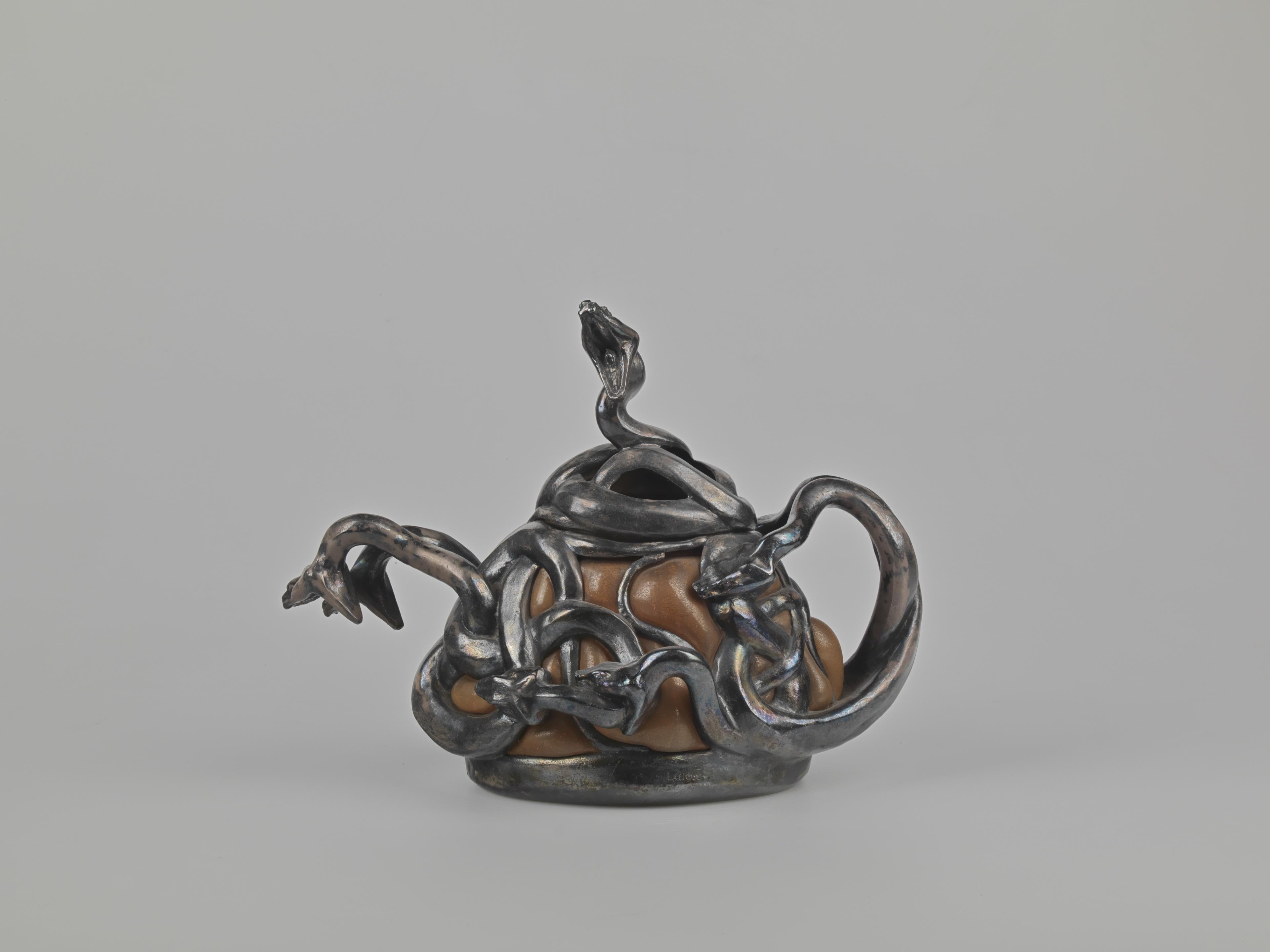Gallery

This work falls within the category of silversmith items incorporating glass as a decorative material, something which captivated Lalique from very early on. The structure of this piece, at first sight unusual, comprises a tangle of patinated silver snakes, whose intertwined bodies frame the amber-coloured blown glass. As this is a complex technique that is difficult to execute, there are relatively few examples of this kind made by the ‘glass silversmith’.
Utterly daring and original from a creative point of view and based on the curvilinear shape of the serpent, so characteristic of the Art Nouveau period, this unique object corresponds chronologically to the period in which the artist dedicated himself to jewellery, though without neglecting the youthful teachings absorbed in the 1870s in the company of the goldsmith Louis Aucoc. Calouste Gulbenkian acquired the work directly from the artist in 1902.
Object details
- Author(s)
- René Lalique (1860-1945), Master glassmaker
- Title
- Sugar bowl «Serpents»
- Origin
- France
- Date
- c. 1897 – 1900
- Materials
- Glass; Silver
- Technique
- Mould-blown glass and silver
- Dimensions
- Height 220,00 mm; Width 290,00 mm; Diameter 176,00 mm
- Inventory no.
- 1162
Incorporation
- Type
- Purchased
- Provenance
- René Lalique (1860-1945)
- Date
- May 1902